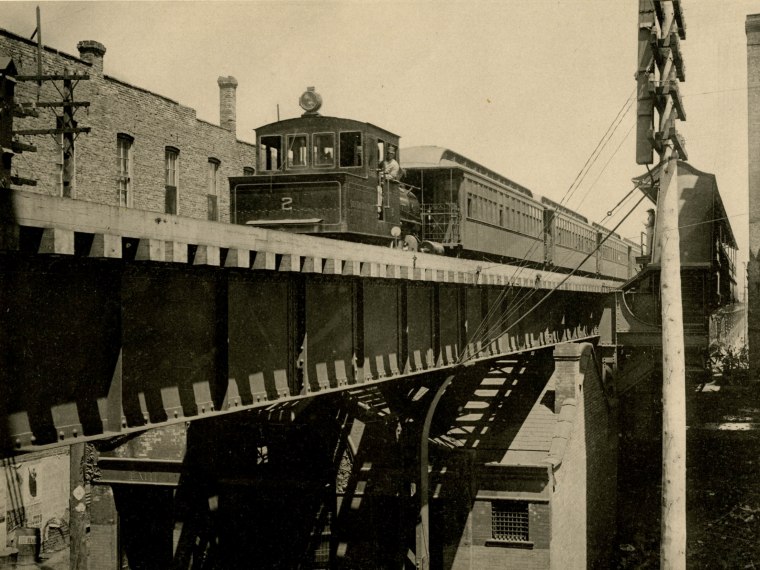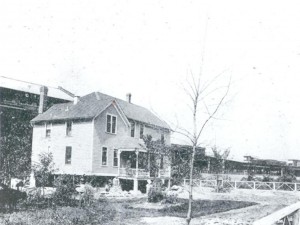For Chicago’s iconic L, or elevated railroad, we owe a debt of gratitude to a colorful cast of characters. They include both Mayors Carter Harrison and Mayor John Roche who approved the first elevated route, then became president of the company operating it. Mike McDonald was Chicago’s gambling and vice king in the late 1800s and majority owner of the Lake Street Elevated.
Members of the City Council of the 1890’s were known as the grey wolves for their rapacious appetite for bribes. Their story is told in Lords of the Levee.
Keeping the grey wolves well supplied with bribes was Charles Yerkes, creative financier extraordinaire. He planned and financed the Loop and north side elevated lines. Like his previous adventures in Chicago’s horse-drawn street railroads, he managed to finance and obtain control of these large undertakings through complex arrays of shell companies selling stocks and bonds—all at no cost to himself. The Loop built, Yerkes retired to New York in 1899. Soon he applied his financing talents to build another iconic rapid transit system: London’s Underground or Tube system. Yerkes’ story is told in Robber Baron.
CTA Historical Information, 1859-1965 and The "L" detail how Chicago’s first L opened in 1892. It was steam operated and ran from Congress to 39th. It was quickly followed by service to the west side. By 1897, the downtown Union Elevated Loop was built and all lines extended service to or around the Loop. By 1898 all lines had switched from steam to the much cheaper electric operation.
By 1900 the elevated had reached Wilson on the north. In the south, the current Green Line reached 63rd.
In the west, the Lake Street line reached Austin Boulevard. The Douglas Park Branch (Pink Line) reached Western Avenue. The Garfield Park Branch (now replaced by the Forest Park Branch of the Blue Line) reached Cicero Avenue. The Logan Square Line went to Logan Square (2500 N., 3200 W.) The Humboldt Park branch went to Lawndale and North Avenues.
Even though part of the city of Chicago, much of this territory was still undeveloped and rural in 1900 as shown in the accompanying picture.




Add a comment to: The L: Technology That Changed Chicago